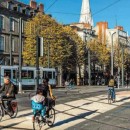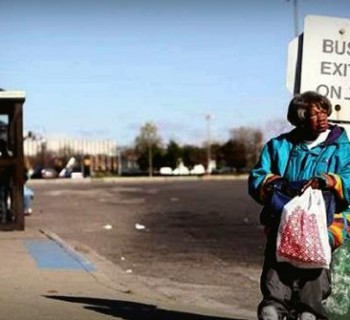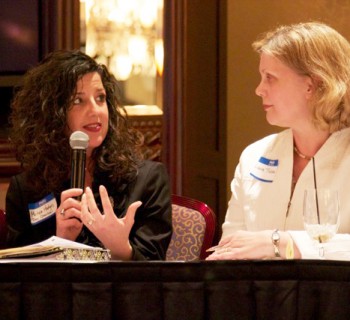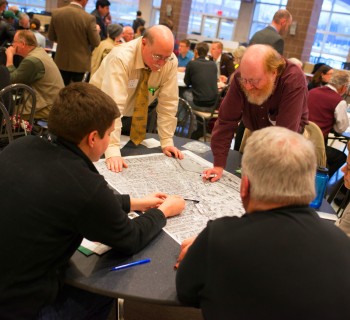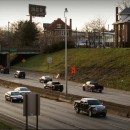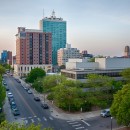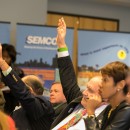Dearborn, Mich.—The Henry Ford is renowned for its devotion to educating millions of visitors about history and about the historic figures who made contributions to transportation, industry, culture, architecture and design.
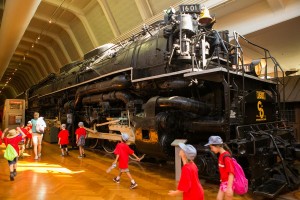 Part of its mission is offering Discovery Camps for children that offer hands-on history instruction to various age groups. This summer, third graders get a chance to learn about the evolution of transportation during its five-day On the Move session.
Part of its mission is offering Discovery Camps for children that offer hands-on history instruction to various age groups. This summer, third graders get a chance to learn about the evolution of transportation during its five-day On the Move session.
“… they’re at the age where they’re becoming fascinated with transportation, and understanding the idea of crossing the country, and they just love the big machines,” says The Henry Ford Manager of Youth and Museum Programs, Debra Stephens, of the 7 and 8 year-olds who attend the camp.
“Our mission is to help the children understand the evolution of transportation, and how it has made the world more accessible, and to help them understand that if we couldn’t get from place to place, we couldn’t interact or learn from people in different parts of the world.”
On Monday, On the Move begins with the most elemental form of transport – walking. “They learn about the people who used their feet for transportation, like Native Americans, and runaway slaves and the Underground Railroad,” explains Stephens. “Then we move on to the historic bicycles, and the children have an encounter with the (1870s-era Penny Farthing) ‘big wheel’ bicycle rider.” The kids then come back to the classroom and make their own compasses and moccasins.
“I really loved it,” says one young student, Paige Dolph of Midland, who attended an On the Move camp in mid-July. “It’s like going back in time. I liked the walking part, because we got to see a lot of history, and it was cool to make our own moccasins.
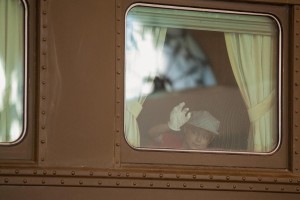 “I was sort of scared at first when the guy got up on that big bike, because I didn’t want him to get hurt,” Dolph adds. “It was interesting that the womens’ bikes were smaller, sort of like our bikes today – they couldn’t ride the big-wheel bikes, because of their skirts.”
“I was sort of scared at first when the guy got up on that big bike, because I didn’t want him to get hurt,” Dolph adds. “It was interesting that the womens’ bikes were smaller, sort of like our bikes today – they couldn’t ride the big-wheel bikes, because of their skirts.”
On Tuesday, the focus turns from feet to hooves – the children learn about the use of animals to get around. This includes a presentation at the village’s horse barn that looks at the history of horses in America. They also get to meet a historic forest ranger, on horseback, dressed in period garb, who talks about how the horse helps him keep the forest safe.
“Horse day” also includes a lesson on how “the carriages and wagons helped us to get beyond Michigan, and we talk about the Western Expansion,” which also includes going to the Museum to view the 1800s-era Conestoga wagon on display there, says Stephens.
“I liked being able to pet the horses, and riding in the horse-drawn wagons,” says another young mid-July student, Sydney Jorgensen of Carlton. “Plus, one of the horses pooped, and I got to scoop it up.”
“The horses and the rangers were some of the things I liked the best,” adds another student, Tyler Bunse of Dearborn. “It was cool to learn what the rangers did, and about the history of the horses.”
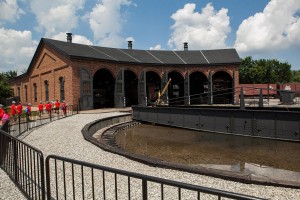 On the third day, the children learn about trains. Inside the museum, they explore the toney, well-appointed Bangor & Aroostook private rail car that Henry Ford used to travel the country and the DT&I Caboose, which is not open to the public at all.
On the third day, the children learn about trains. Inside the museum, they explore the toney, well-appointed Bangor & Aroostook private rail car that Henry Ford used to travel the country and the DT&I Caboose, which is not open to the public at all.
They also get ride to on the train that chugs around the perimeter of the village and “drive” the historic hand carts along the tracks, while wearing little railroad caps.
Jorgensen effuses that “it was so much fun to push the handles on the hand carts. We got to go pretty fast.”
“It was really cool to go inside those private cars, and see where Henry Ford and two different presidents (Herbert Hoover and Warren G. Harding) sat,” says Dolph. “It was like we got to see a bit of royalty. And it was very nice inside. The wood for the panels was transported from Europe, and they were hand-made.”
Adds Bunse: “I liked that we got to go inside those railroad cars, because they’re secret places.”
Thursday is “car day,” when the children visit the village’s reduced-scale replica of Henry Ford’s old Mack Avenue plant, and the replica of the Bagley Avenue shed where Ford developed his first car, the Quadricycle.
The real Mother Lode on car day, though, is when the kids get to zip around the village in the Ford Model T’s, which mostly pre-date the 1920s. The driver points out the many differences between the utilitarian Model T and today’s comfy, bubble-like cocoons – like, no radio, no seat belts, no air conditioning and no windshield wipers.
“Car day” also involves decorating and painting a small rubber-band-powered race car and building small models of the Model T’s they were tooling around in that morning.
On the final day, Friday, the children learn about flight.
“They make little whirligigs and visit the Heroes of the Sky exhibit, which is an homage “to the various people who contributed to the evolution of flight – inventors, scientists, entrepreneurs, and the barnstormers who introduced flight to the public,” says Stephens.
The kids also witness a presentation by actors portraying the Wrights and their sister Katherine, who talk about the importance of not taking things for granted, and the need to question things.
“This is a unique experience for them” says Stephens. “It’s very hand-on, and we want them to go away with an appreciation for how we can learn from the past, and an appreciation for the importance of museums -- and to gain an understanding of the need to preserve our heritage, and our history.”



